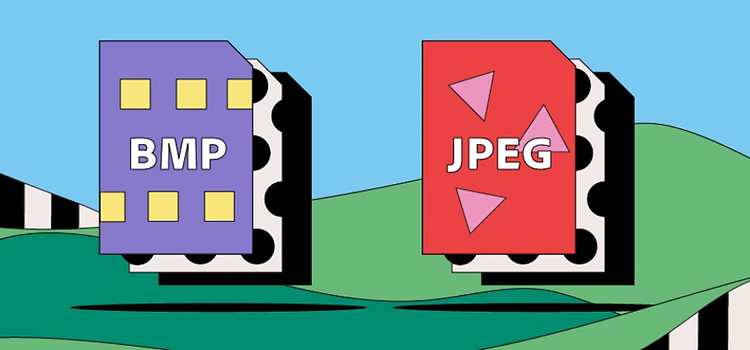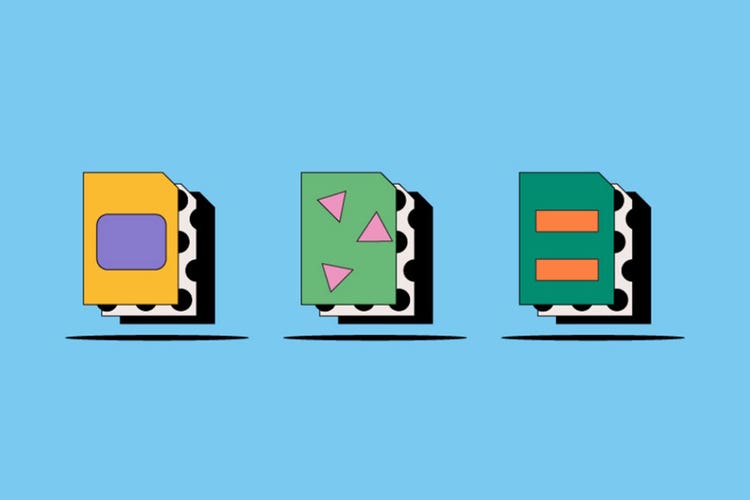PHOTOGRAPHY
BMP vs. JPEG
BMP and JPEG are two of the oldest image file types, dating back to the early 1990s. BMP files contain large, raw, high-quality images, which makes them better for editing. JPEG files automatically compress, so they’re generally smaller and of lower quality. Find out more about the features, history and common uses of BMP and JPEG.

https://main--cc--adobecom.hlx.page/cc-shared/fragments/seo-articles/get-started-notification-blade
What is a BMP file?
BMP stands for bitmap, a raster-based file type designed in the early days of computer graphics to display images independently from devices. Because BMP files are information-rich, they tend to have large file sizes.
What is a JPEG file?
The Joint Photographic Experts Group developed the JPEG, now a widely popular raster-based image file. Built around an innovative lossy compression method, JPEGs strike a balance between reducing file sizes and preserving image quality.
What is the difference between BMP and JPEG files?
Both files are raster-based, dating back to the early days of computer graphics and digital photography. Both also display high-quality images that can be compressed. The main differences between BMP and JPEG are in how they compress image data, display colour and maintain image quality — as well as how they’re typically used.
JPEGs are more popular than BMP files these days, mainly due to the widespread use of smartphones and social media where JPEGs are the go-to file type.
File sizes.
JPEGs compress automatically — but the image data that you lose when this happens is barely perceptible to the eye. The JPEG file analyses image information and identifies erasable and compressible details based on the image type.
This process can even reduce JPEG files to 5-10% of their original size. On the other hand, BMP files are generally larger than JPEGs. The intention behind BMPs is to hold as much information as possible. So, while JPEGs can get quite large, BMPs are often bigger.
Compression.
As soon as you save an image as a JPEG, it gets compressed. The JPEG compression process is known as lossy— with each subsequent save, change, edit, compression or uncompression, more information gets** deleted permanently. Nonetheless, JPEG files often achieve compression of 10:1 with no significant decrease in quality.
BMP files are uncompressed. If you want to compress a BMP file, you must do it manually. And if you want to uncompress the image, you’ll be able to restore its full size and detail. The process of compressing and uncompressing BMPs can be slow.
Quality.
BMP files generally have a higher quality than JPEGs.** In a BMP image, each pixel has its own specific colour. The file may also contain information like colour depth, colour profiles, alpha channels and more. This gives BMP images a higher resolution than JPEG files. Their quality and resolution mean that it’s easier to edit BMP files because there are more pixels you can manipulate.
Use cases.
JPEGs are the most widely used digital image format. Nearly all cameras — both handheld and in smartphones — can take photos as JPEGs. Most scanners do, too. Though JPEG files can be very high-quality, what makes them exceptionally useful is their excellent quality at small sizes. They take up less space in camera memory cards and copy or download faster than BMP files, making them ideal for email attachments, websites, selfies and more.
Printing images.
Neither BMP nor JPEG is ideal for printing physical photos. BMP files save and edit images, but don't print well. You can print JPEG images, but they’re better used on the Internet. Files like TIFF and DNG are much better for high-quality printing. If you’re going to print a JPEG file, make sure that you adjust the PPI (pixels per inch).
Compatibility.
BMP files will operate most effectively with Microsoft Windows and OS/2 operating systems. If you use Microsoft, BMP files have many built-in advantages. JPEGs are everywhere and highly versatile, no matter what operating system you’re on. They work with a wide array of programmes — on phones, tablets, laptops, digital cameras and more.
